#Clay tablets
Explore tagged Tumblr posts
Text

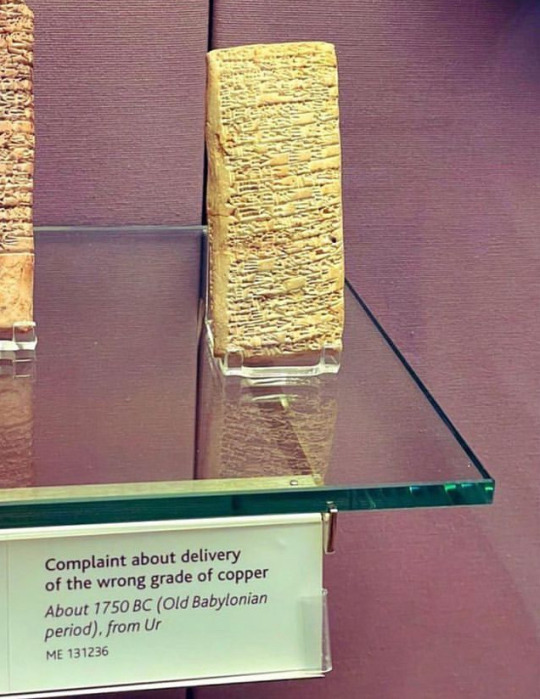
im going insane over this tweet because absolutely no one in the comments knew about ea-nasir?? no one had even heard about this or seen this photo before?? like??? i fully forgot that the story of ea-nasir and his mid copper is not an important historical event outside of tumblr dot com. i feel like i’ve been transported into a different and worse reality and i would like to go back
#also the way i’ve seen that exact photo before from someone’s tumblr post about it#this is making me insane#the way things travel from tumblr to other sites is just. so fucking weird#what do you MEAN you dont know about ea-nasir and his copper what do you MEAN#twitter#x (twitter)#ea nasir#ancient history#babylonian history#copper#clay tablets#heritage post#heritage posts#.txt#alex talks
367 notes
·
View notes
Text
You know how like, really old clay tablets are a Thing and is the reason we know a bunch of stuff from how things were, thousands of years ago?
I keep thinking, in a couple of thousand years, what will be left of the world we live in today? Paper won't last ... Neither will digital storage. Metal, yes probably. Plastic? I don't know.
Anyway, I've been thinking we should put important things on clay tablets, because obviously those things last!
So today I made a couple. Just cause. And what did I put on them? What is important enough to save for the Future?
Random comments that I've gotten on fanfics I've written, of course. :)

And also an excerpt from a fanfic I've written (Baby steps, because I'm still proud of it), because why the hell not? XD
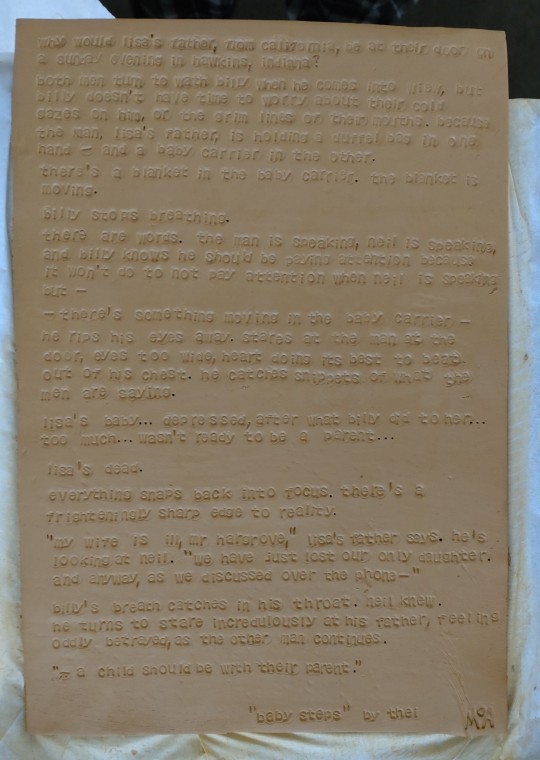
Now I just have to let them dry and then hope they survive the burning. :p (then ask to be buried with them when I die to confuse the archeologists of the future)
#archeology#or you know ... future archeology?#clay#clay tablets#ihni writes#ihni does#also these took SUCH A LONG TIME#i had to sit on my kitchen floor and do them and it took like FIVE HOURS#my back is shot to hell#my knees creak#i am too old for this
72 notes
·
View notes
Text


23 notes
·
View notes
Text
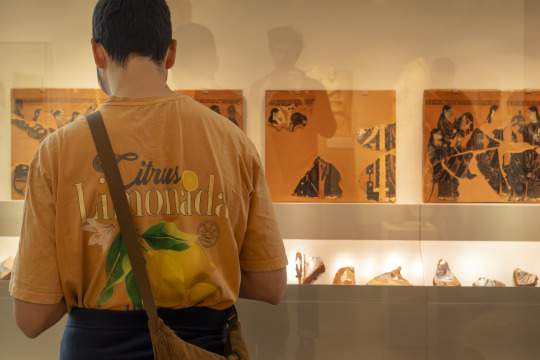
#peoplematchingartworks#exekias#clay tablets#altes museum#stefandraschan#photography#contemporaryart#berlin
17 notes
·
View notes
Text
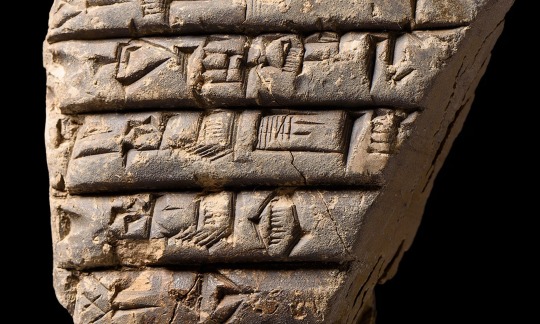
Part of one of the hundreds of administrative tablets discovered at the Sumerian site of Girsu.

The tablets were found at the site of a large state archive building, made of mud-brick walls and divided into rooms or offices. (source)
#cuniform tablets#mesopotamia#archaeology#ancient history#clay tablets#administrative records#ancient mesopotamia
7 notes
·
View notes
Text

This is why you always get rid of the evidence, unless you want your embarrassing moments to become part of the historical record and taught about by teachers a thousand years from now!👩🏻🏫
😂
#history#ur#ea nasir#copper#sumerian#ancient history#mesopotamia#funny#complaint tablet of ea nasir#babylon#historical figures#clay tablets#funny history#ancient#archeology#nanni#writing#babylonian#artifacts#nickys facts
22 notes
·
View notes
Text
We truly never change 😭
18 notes
·
View notes
Text
'A king will die': 4,000-year-old lunar eclipse omen tablets finally deciphered
#cuneiform#clay tablets#prophecy#lunar eclipse#eclipse#religion#history#ancient history#mesopotamia#did you know#news article
10 notes
·
View notes
Link
#cuneiform#news article#writing history#history of writing#lexical lists#clay tablets#ancient history#ancient mesopotamia#mesopotamia
5 notes
·
View notes
Text
Ancient Archiving
The first archive existed around 4,000 B.C., in which Sumerians used clay tablets to track transactions.
C. L. Bedale and C. H. W. Johns discuss these translated tablets, summarizing them as a necessary part of life for Babylonian temple stewards. Many people lived by wages and allowances from the temples, and thus we have these ledgers illuminating aspects of Babylonian city life.
We also have clay tablets from the Hittite Empire, around 1400-1300 B.C. A majority of tablets from Boǧazköy, Turkey are legal texts, documenting their laws, family relations, commodity prices, and more. These also include religious texts, which tell us about certain rituals and beliefs about gods and storytelling.
The archives of Egypt, around 3,000 - 1,000 B.C., likewise served to document legal matters, along with administrative and military information. One group of papyri, kept at a harbour site, details the movement of boats carrying limestone and food deliveries to a building site. These inform us about how administration worked around this construction project. We also, of course, have many records about the functions of temple life for these periods, due to papyrus being best preserved in dry, cool places.
The earliest surviving Chinese writing is on oxen bones of about 1600 - 1100 B.C. The writing details divinations made by the contemporarily ruling Shang royal house. Other writing materials include tortoiseshells and bronze, all documenting similar divinations, providing the moniker “oracle-bone script”. Around 500 B.C., a new script emerged to create documentation of government affairs, written on bamboo scrolls. This is more accurately related to the concept of archiving, but it is useful to know the earlier script it emerged from.
We are constantly trying to learn about the past. Having historical information is extremely valuable to improve our foresight and to have past data to compare our current world to. For example, Ancient Greece holds the first known democracy. We know many details of how that government in Athens worked because of written records of speeches. We therefore know that what we currently call the democratic nation of the U.S.A. is not the same. While Ancient Athens was a direct democracy, the U.S. government is more accurately a republic, sometimes referred to as a representative democracy.
Past archives also help us keep current archives. Many Ancient Egyptian documents have been lost to the elements, due to the moisture-sensitive nature of papyrus. What has survived is mostly in tombs and temples, or on clay tablets. With these surviving artifacts, we can better understand what materials will last under certain conditions, and the environments required both to find other ancient materials, and to preserve modern ones.
More broadly, this is also why archeology is so important. Archaeological projects need to be funded in order for us to find and gather these artifacts. Without proper funding for research and for preserving these materials in museums, much of this information would be lost to us.
Additional Resources
1. Overall History
2. Sumerian Ledgers
3. Hittite Archive
4. Ancient Egypt Archives
5. Chinese Writing
6. Chinese Writing 2
#archives#ancient archiving#research#article#resources#history#ancient history#clay tablets#hittite empire#ancient egypt#ancient cultures
2 notes
·
View notes
Text


Was someone going to tell me that the retake of the national high school history exam in 2023 included the complaint tablet to Ea-Nasir??? Or was I supposed to find out myself which I just did?? This is the whole complaint in Dutch, including a question on how this shows that Ur was an early urban society.
#archaeology#ea nasir#history#ur#cuneiform#clay tablets#nanni#bad copper is something of all ages ig#gimil sin and nanni got scammed fr fr#mesopotamia#copper merchant
5 notes
·
View notes
Text
You know how like, really old clay tablets are a Thing and is the reason we know a bunch of stuff from how things were, thousands of years ago?
I keep thinking, in a couple of thousand years, what will be left if the world we live in today? Paper won't last ... Neither will digital storage. Metal, yes. Plastic! I don't know.
Anyway, I've been thinking we should put important things on clay tablets, because obviously those things last!
So today I made a couple. Just cause. And what did I put in them? What is important enough to save for the Future?
Random comments on fanfics I've written, of course.
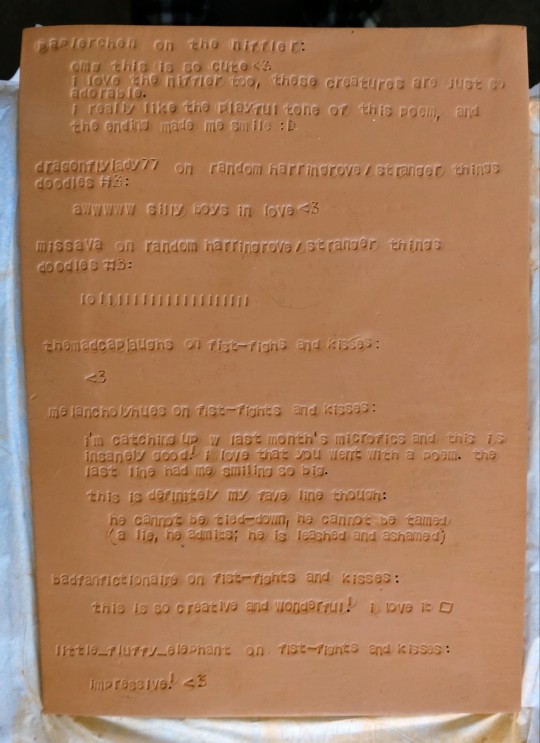
And also an excerpt from a fanfic I've written, because why the hell not right? XD
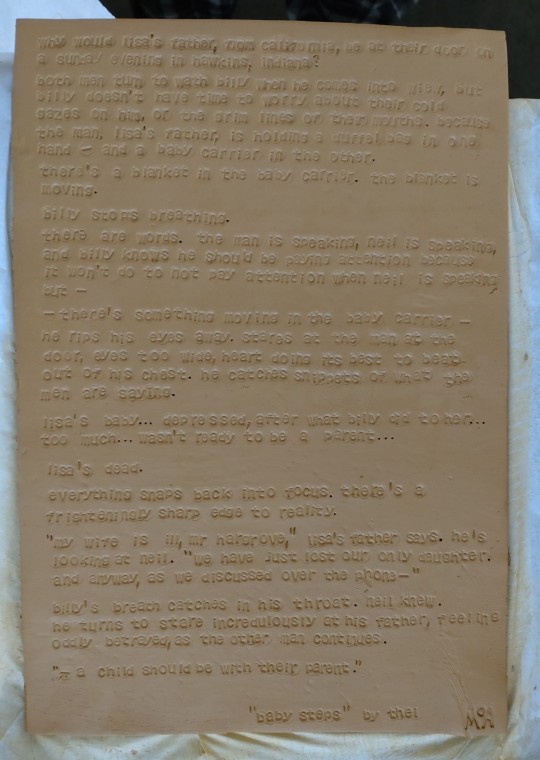
Now I just have to let them dry and then hope they survive the burning. :p (then ask to be buried with them when I die to confuse the archeologists of the future)
#archeology#or you know ... future archeology?#clay#clay tablets#ihni writes#ihni does#also these took SUCH A LONG TIME#i had to sit on my kitchen floor and do them and it took like FIVE HOURS#my back is shot to hell#my knees creak#i am too old for this
32 notes
·
View notes
Text
Ancient Treasures Beeing Uncovered Waiting Excibition
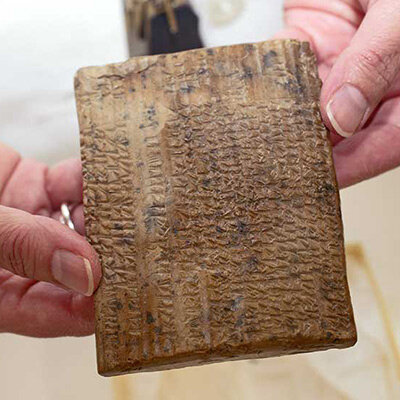
TEHRAN - More than two months have passed since the recovery of 3506 Achaemenid tablets, and the time for their unveiling has not yet been determined. However, the director of the National Museum of Iran announced their imminent display in this museum soon.
It was late in September that 3506 Achaemenid tablets were returned to Iran after nearly 90 years, accompanying the President's plane.
The treasured tablets were returned home by the plane carrying President Ebrahim Raisi, who addressed the 78th session of the United Nations General Assembly during his visit to New York.
These clay tablets were part of a larger shipment discovered at Persepolis in 1311, which was entrusted to the Oriental Institute of Chicago for deciphering and study.
Out of over 30,000 pieces held by the Chicago Institute for study and deciphering, five shipments have been returned to Iran in the Iranian years 1327 (1948-49), 1330 (1951-52), 1383 (2004-05), 1398 (2019-2020), and 1402 (2023-24), ISNA reported.
Yet, portions of these tablets still remain at the institute. Ezzatollah Zarghami, the Minister of Cultural Heritage, Tourism, and Handicrafts, had previously mentioned the process of returning the remaining tablets, stating that the groundwork for their return has been laid out. “According to an agreement made by the Americans, our experts will go to that country to verify the remaining tablets, after which they will gradually be returned to Iran.”
However, the fifth shipment, arriving in Iran on September 21 this year, consisted of 836 small tablets in Aramaic script and 2670 large tablets in Elamite script. They were shipped in nine boxes each weighing 75 kg. They were ultimately delivered to the National Museum of Iran.
It was planned that after quarantine, inspection, and study, some of these tablets would be put on display. Jebrael Nokandeh, the director of the National Museum of Iran, responding to ISNA regarding the timing of their display, stated: “It will be showcased soon.”.

He had previously mentioned the possibility of showcasing the Achaemenid tablets during Research Week (Dec. 16 to 20), but upon ISNA's follow-up, he responded: "The time for display (of the fifth shipment of recovered Achaemenid tablets) is approaching."
Studies conducted thus far on the Achaemenid clay tablets indicate that their content encompasses the administration and upper echelons of society during that historical period.
Archaeologists affiliated with the University of Chicago discovered the tablets in the 1930s while excavating in Persepolis, the ceremonial capital of the Persian Empire. However, the institute has resumed work in collaboration with colleagues in Iran, and the return of the tablets is part of a broadening of contacts between scholars in the two countries, said Gil Stein, director of the Oriental Institute at the University of Chicago.
They are very important sources of information revealing economic, social, and religious data about the Achaemenid Empire (550-330 BC) and the larger Near Eastern region in the fifth century BC.
Persepolis, locally known as Takht-e Jamshid, was the ceremonial capital of the Achaemenid Empire. It ranks among the archaeological sites, that have no equivalent, considering its unique architecture, urban planning, construction technology, and art.
Narratives say that Persepolis was burnt by Alexander the Great in 330 BC apparently as revenge against the Persians because it seems the Persian King Xerxes had burnt the Greek City of Athens around 150 years earlier. It was the largest and most durable empire of its time, stretching from Ethiopia, through Egypt, to Greece, Anatolia (modern Turkey), Central Asia, and India at its height.
Source:https://www.tehrantimes.com/news/491889/Achaemenid-tablets-recovered-from-U-S-when-will-they-be-unveiled
#Iran#clay tablets#Ancient Iran#Achaemenid#Iran Tehran#New York#Oriental Institute of Chicago#Iranian Minister of Cultural Heritage#Tourism and Handicrafts#Jebrael Noccandeh#iran culture#ایران#arhcaeology#وزیر میراث فرهنگی، گردشگری و صنایع دستی#ایران باستان#باستان شناسی#موسسه شرقی شیکاگو#هخامنشی
8 notes
·
View notes
Text
500 Hittite cuneiform tablets were translated at the start of the project by photographing them in high resolution and scanning them with 3D technology. According to the results of the testing, the AI’s success rate was 75.66%.
Project coordinator Gavaz also explained that they tried to decipher the Hittite language manually, but this method proceeds more slowly and is prone to errors, while AI works in a shorter time and with a low margin of error.
The fact that some tablets are broken or deformed and other factors have an effect on the results. But we are trying to solve high-resolution photos with different algorithms.
The data obtained from the deciphered tablets will be shared with the scientific world by Hittitologists. Also, the public will be able to view the cuneiform clay tablets once the translation phase is finished in the soon-to-be-opened Hittite Digital Library.
#ancient#history#archeology#ai#cuneiform#clay tablets#hittites#scanning#ancient languages#translation
6 notes
·
View notes
Text
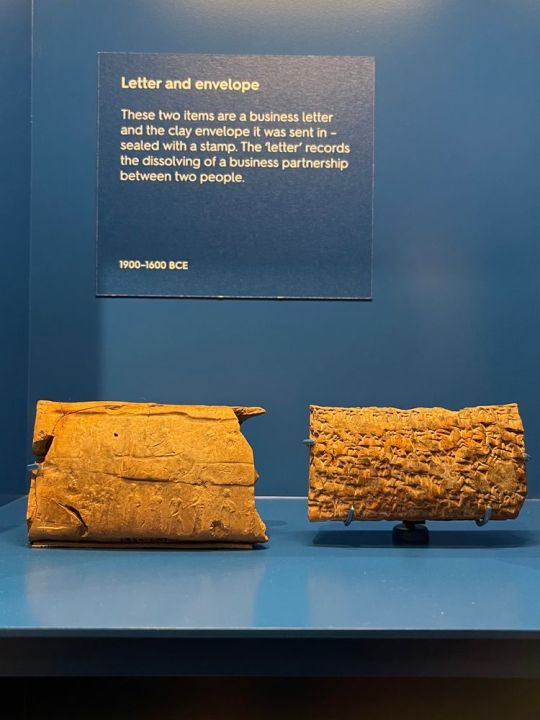
2 notes
·
View notes
Text
From Manuscripts to E-Readers: 10 Milestones in Book History
The book, in its various forms, has been humanity’s most enduring and impactful medium for preserving knowledge, sharing stories, and transmitting ideas across generations. From the earliest scratches on clay tablets to the pixels on a modern e-reader, its evolution is a fascinating journey that mirrors the progress of civilization itself. Each transformation in how books are created, reproduced,…
#Aldus Manutius#ancient libraries#ancient manuscripts#book formats#book technology#Clay tablets#codex#communication history#digital books#e-readers#evolution of books#Friedrich Koenig#future of books#Gutenberg Bible#historical innovations#history of books#history of reading materials#history of writing#illuminations#industrial printing#information dissemination#Johannes Gutenberg#Keywords: book history#Kindle#knowledge transfer#Library of Alexandria#literacy history#mass market books#medieval scriptoriums#modern publishing
0 notes